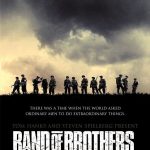Close Encounters of the Third Kind (1977)
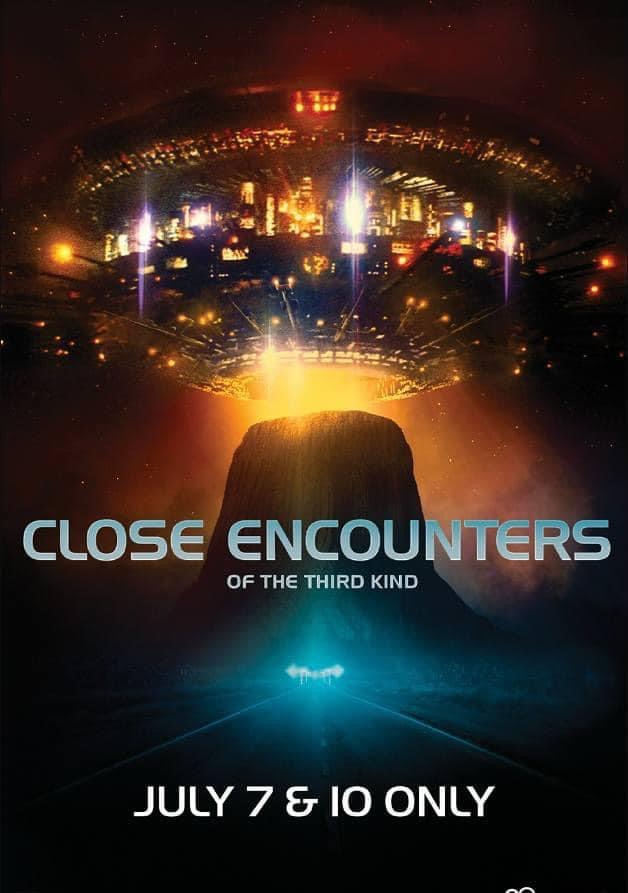
Close Encounters of the Third Kind (1977), directed by Steven Spielberg, is an iconic film that stands as a landmark in the science fiction genre. Known for its masterful blend of awe, mystery, and humanity, the movie has left an indelible mark on both popular culture and the cinematic landscape. Spielberg, who had already gained fame with Jaws (1975), used this film to explore themes of curiosity, the search for meaning, and the possibility of extraterrestrial contact. It is often celebrated for its groundbreaking special effects, innovative storytelling, and emotive musical score by John Williams.
Suggested videos for you:
Plot Overview
The film begins with a series of mysterious events around the globe: a squadron of World War II planes missing since 1945 is found intact in the Sonoran Desert, a ship reappears in the Gobi Desert, and strange lights and sounds are reported by various witnesses. The story primarily follows Roy Neary (Richard Dreyfuss), an average man living in Indiana who encounters a UFO one night while responding to a power outage. This encounter changes him profoundly, compelling him to seek answers as he becomes increasingly obsessed with visions of a distinctive mountain-like shape.
Meanwhile, the government, led by Claude Lacombe (François Truffaut), a French scientist working with an interpreter (Bob Balaban), investigates these phenomena in secret, decoding a series of musical notes that seem to be a means of communication. Roy’s obsession strains his relationship with his family, leading to his wife, Ronnie (Teri Garr), leaving him with their children. He eventually connects with others who have had similar experiences, including Jillian Guiler (Melinda Dillon), whose son Barry was abducted by the mysterious lights.
Their search culminates at Devil’s Tower in Wyoming, the iconic shape that Roy has been obsessively recreating. Here, the climax unfolds as government officials and chosen civilians witness an extraordinary first contact with a fleet of extraterrestrial spacecraft. The aliens communicate through music, culminating in a peaceful exchange where humans and extraterrestrials meet, and Roy is selected to join them on their journey.
Themes and Symbolism
Close Encounters of the Third Kind is rich in themes that explore human curiosity, obsession, and the pursuit of truth. Roy Neary’s encounter symbolizes a profound awakening that drives him to seek understanding at any cost, portraying the idea that contact with the unknown can be both terrifying and enlightening. His journey represents humanity’s innate desire to explore beyond known boundaries, an enduring theme in both science fiction and human history.
The theme of communication is central to the narrative. Spielberg’s use of music as a universal language highlights the idea that connection is possible despite vast differences. The iconic five-note musical motif serves as a bridge between humanity and the extraterrestrials, illustrating that understanding can transcend spoken words and conventional boundaries.
Isolation and sacrifice are also recurring motifs. Roy’s obsession with the vision of Devil’s Tower isolates him from his family and society, reflecting how those who pursue the unknown or unconventional truths often face alienation. This theme resonates with real-life stories of inventors, artists, and scientists whose groundbreaking ideas separated them from their peers and loved ones.
The use of light throughout the film is symbolic, representing knowledge, enlightenment, and the divine. The bright, ethereal glow of the UFOs contrasts with the dark, ordinary world, signaling a shift from the mundane to the extraordinary.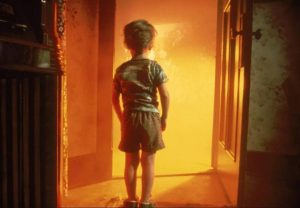
Visual and Artistic Execution
Spielberg’s direction, coupled with Vilmos Zsigmond’s cinematography, creates a visual feast that still holds up remarkably well decades after its release. The special effects, overseen by Douglas Trumbull, were groundbreaking for the time and continue to be admired for their practical ingenuity and use of models and light. The UFOs are depicted with dazzling arrays of colored lights, giving them an otherworldly and almost magical quality. This visual choice was instrumental in portraying the extraterrestrials as potentially benevolent beings, steering the narrative away from the conventional “alien invasion” trope.
The sequence at Devil’s Tower, where the humans and aliens finally meet, is particularly notable for its awe-inspiring scale and atmosphere. The towering rock formation itself becomes a character in the story, looming as a silent witness to one of humanity’s most significant encounters. The film’s use of location and set design creates a sense of wonder that amplifies the climax’s impact.
John Williams’ score is an essential element of the film’s success. The use of the five-note motif not only enhances the suspense and excitement but also becomes a character in its own right. The score is both haunting and uplifting, matching the film’s themes of mystery and revelation. Williams’ ability to infuse scenes with emotional weight elevates the storytelling, making the audience feel as though they are participating in the moment of contact.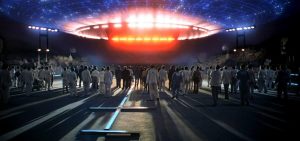
Performances
Richard Dreyfuss’s portrayal of Roy Neary is one of the film’s highlights. Dreyfuss brings a relatable, everyman quality to Roy, capturing the character’s transition from bewilderment to obsession with remarkable believability. His performance conveys both the excitement and the pain of being consumed by a pursuit that others cannot understand. The authenticity he brings to the role makes Roy’s journey both sympathetic and engrossing.
Melinda Dillon’s performance as Jillian Guiler is heartfelt and compelling. She portrays a mother desperate to understand the unknown forces that have taken her son, balancing vulnerability with determination. Her chemistry with Dreyfuss adds depth to the film, showing how the shared experience of the encounter forges bonds among those affected.
François Truffaut’s casting as Claude Lacombe, the government scientist, adds an element of gravitas to the story. His portrayal is understated yet effective, embodying a calm and open-minded approach to the phenomena that contrasts with the more secretive and militaristic tendencies of other officials.
The supporting cast, including Teri Garr as Roy’s wife, Ronnie, brings additional emotional layers, showing the personal costs of Roy’s fixation and grounding the story in relatable family dynamics.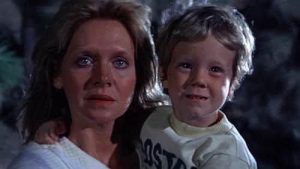
Pacing and Storytelling
The film’s pacing is deliberate, with Spielberg taking his time to build suspense and awe. While some modern viewers might find certain parts of the film slow by contemporary standards, this pace allows the story to develop organically. The gradual buildup to the climactic scene at Devil’s Tower creates a sense of anticipation that mirrors the experiences of the characters themselves. Spielberg’s use of small, personal moments—like Roy’s increasingly erratic behavior and the silent abductions—contributes to an overarching feeling of unease and wonder.
The storytelling is masterful, blending elements of science fiction with human drama. Spielberg’s choice to focus on the personal impact of the encounters, rather than just the spectacle, distinguishes the film from other sci-fi movies of its era. The narrative intertwines multiple storylines—Roy’s obsession, Jillian’s search for her son, and Lacombe’s investigation—seamlessly, converging them in a finale that feels both intimate and epic.
Criticism and Legacy
Close Encounters of the Third Kind was met with critical acclaim upon release and has since been considered one of Spielberg’s greatest works. It was praised for its originality, special effects, and emotional depth. However, some critics and viewers have noted that the film’s pacing can feel slow, especially compared to the faster tempo of modern science fiction films. Additionally, Roy’s decision to leave his family behind to pursue the unknown has been a point of discussion, with some finding it unsettling or selfish.
Despite these critiques, the film’s legacy is enduring. It has influenced countless subsequent works in the science fiction genre, inspiring a more thoughtful and optimistic portrayal of extraterrestrial contact. The film’s portrayal of aliens as enigmatic but potentially benevolent beings broke from the Cold War-era depictions of hostile invaders and paved the way for more nuanced interpretations of first contact in films like E.T. the Extra-Terrestrial (1982) and Arrival (2016).
Spielberg’s film also contributed to the public’s interest in UFOs and space exploration. Its release coincided with a period of heightened interest in extraterrestrial life, making it culturally significant as well as cinematically groundbreaking.
Conclusion
Close Encounters of the Third Kind (1977) is more than just a science fiction movie—it’s a cinematic exploration of humanity’s enduring quest for answers beyond our world. With its powerful themes, compelling performances, groundbreaking effects, and unforgettable musical score, the film has become a classic that continues to resonate with audiences. Spielberg’s masterful direction weaves together personal and cosmic stories, creating a film that is as much about the wonder of human curiosity as it is about extraterrestrial life.
For anyone interested in a thoughtful, visually stunning, and emotionally rich film that captures the essence of discovery and the unknown, Close Encounters of the Third Kind remains a must-watch. It is a testament to the idea that humanity’s most profound experiences often come from looking up at the stars and asking, “What if?”








